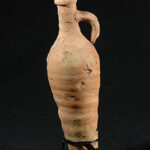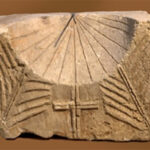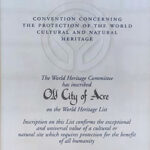The City Location
Akko is situated in the northern part of the coastal valley, also known as the Akko Valley. It borders on Bustan HaGalil (“Orchard of the Galilee”) to the north and extends all the way to the Na’aman River to the south.
Akko boasts a beautiful seashore, which is the northernmost point that the soft, fine sand of the Nile Estuary reaches.
Situated on a peninsula, Old Akko is one of the few cities along the shores of the Mediterranean whose surrounding walls have remained intact, aside from two openings that now provide access to motor vehicles. These openings in the wall were created by the British.
Old Akko is a multifaceted city and it is built in layers that have been almost perfectly preserved. The city was established about 5,000 years ago during which many peoples fought for it.
It is customary to divide the history of Akko into 13 main periods which can be seen in the timeline.
Four religions have made Akko their home and left their mark there: the Jewish synagogues, the elegant churches in the Christian neighborhoods, the Moslems’ monumental mosques and the garden of the tomb of Bahá’u’lláh, founder of the Bahai religion and the House of Abud.
Akko is known for its pleasant weather throughout most of the year; and it offers a beautiful seashore, marina and fishing port. It is a city brimming with history and each and every one of its alleyways is filled with voices from the past. It evokes an atmosphere of freedom and romance.
The Name
The source of its name is unknown, however presumably, it is not Semitic. The Egyptians were using it as long ago as the second millennium BCE, but since hieroglyphics only have two consonants, the name was written as CK and there is no way of knowing how it was pronounced (the last syllable in particular).
In the letters of El-Amarna, which were written in Acadian, the letter H is used to signify the guttural Hebrew letters alef-hey-chet-ayin; accordingly, the name of the city could be written either as Haca or Aca. Had the name not been preserved, we would not have been able to clearly associate it with the name appearing in the hieroglyphics.
The AKK spelling was preserved in the Assyrian language.
Ancient Hebrew legend has it that the Mediterranean Sea flooded the world and when it reached the shore of Akko it stopped short, as written in the Book of Job (38:11) “Hitherto shalt thou come, but no further.” In the legend, the Hebrew words “Ad po” [hitherto] become “Ad ko” – hence, Akko [Akko].

















































































